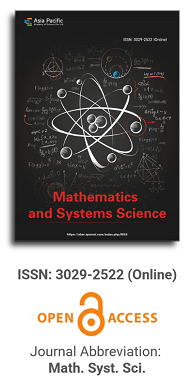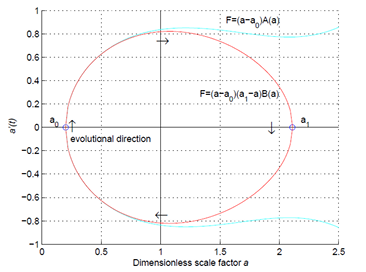


Decision-making models under conditions of uncertainty of formation, description and intellectual analysis of complex data files
Vol 3, Issue 2, 2025
Download PDF
Abstract
Research objective: to prove the feasibility of forming a problem-oriented array under complex conditions of uncertainty by using different options for modeling decision-making and selecting the optimal model. Formation, description, and intellectual analysis of a complex data set, which is an example of a problem-oriented library-museum-archival-information array on nobelistics, are carried out under conditions of uncertainty due to the ambiguity of attribution of each element to this array. The possibility of modeling decision-making in these conditions is shown, the best of which is the optimal formation, description, and intellectual analysis of a complex array of problem-oriented data. A typical information situation is used for modeling when the decision-making body has knowledge of the a priori probability distribution on the state elements of the data array. For each of the seven variants of information situations, a set of criteria for making optimal decisions is selected; each criterion is mathematically described. The real functioning subject-oriented library-museum-archive-information data array on nobelistics of the International Nobel Information Center, consisting of the Nobel Scientific Library, the Museum of the Nobel Family and Nobel Prize Laureates, the Archive of the Nobel Family and Nobel Prize Laureates, and electronic databases on nobelistics, was used.
Keywords
References
1. Kahneman D, Slovik P, Tversky A. Judgment under uncertainty: Heuristics and biases, 1st ed. Cambridge University Press; 1982. p. 632.
2. Filinov-Chernyshev NB. Development and adoption of management decisions: Textbook and practice, 3rd ed (Russian). Yurait; 2024. p. 338.
3. Kochenderfer MJ, Amato C, Chowdhary G, et al. Decision making under uncertainty. The MIT Press; 2015. p. 350.
4. Larichev OI. Theory and methods of decision-making (Russian). Logos; 2006. p. 296.
5. Kuwashima K. How to Use Models of Organizational Decision Making. Annals of Business Administrative Science. 2014; 13(4): 215–230. doi: 10.7880/abas.13.215
6. Taherdoost H, Madanchian M. Decision Making: Models, Processes, Techniques. Cloud Computing and Data Science. 2023; 5(1): 1–14. doi: 10.37256/ccds.5120243284
7. Tyutyunnik VM, Alguzo MMS. Data formation model in a problem-oriented library-museum-archival-information massive. The world of science without borders [Electronic resource]: Materials of the XI All-Russian scientific and practical conf. of young scientists. Tambov, Tambov State Technical University; 2024. pp.324–326.
8. Tyutyunnik VM, Alguzo MMS. Data formation in library-museum-archival-information array (Russian). Devices and Systems. Management, control, diagnostics. 2024; 6: 40–44.
9. Prospective areas of research in science and technology: Collective monograph. Tambov; Moscow; St.-Petersburg; Baku; Vienna; Hamburg; Stockholm; Bouake; Varna; Tashkent. INIC Publishing House “Nobelistics”; 2021. p. 242.
10. Abd Alhadi Kh, Minin YV, Tyutyunnik VM. The belonging function and the aggregation operator in the fuzzy information systems of decision making (Russian). Devices and Systems. Management, control, diagnostics. 2023; 7: 28–32. doi: 10.25791/pribor.7.2023.1425
11. Abd Alhadi Kh, Minin YV, Tyutyunnik VM. Synthesis of affiliation function and aggregation operator in fuzzy information systems of decision making (Russian). Industrial ACS and controllers. 2023; 5: 3–7. doi: 10.25791/asu.5.2023.1434
12. Timofeev DN, Tyutyunnik VM. Information support of the group decision-making support in the polystructural process-oriented enterprise system (Russian). Devices and systems. Management, control, diagnostics. 2020; 6: 22–26. doi: 10.25791/pribor.06.2020.1182
13. Timofeev DN, Tyutyunnik VM. Model of the information support of the metric subsystem of the enterprise activity estimation on the basis of the theory of the polystructural systems (Russian). Devices and Systems. Management, control, diagnostics. 2020; 11: 15–18. doi: 10.25791/pribor.11.2020.1220
14. Dixit АK, Nalebuff ВJ. The art of strategy: A game theorist’s guide to success in business and life, 2nd ed. W.W. Norton & Company; 2008.
15. Griffin C. Game theory: Penn State Math 486 Lecture Notes. Version 1.1.1. Cambridge University Press; 2010. p. 155.
16. Barron EN. Game theory: An introduction. John Wiley & Sons Limited; 2019. p. 437.
17. Lehmann EL, Casella G. Theory of point estimation, 2nd ed. Springer; 1998. p. 590.
18. Zadeh L. The concept of linguistic variable and its application to approximate decision making (Russian). Mir; 1976. p. 166.
19. Bocharov PP, Pechinkin AV. Theory of Probabilities. Mathematical statistics, 2nd ed (Russian). Fizmatlit; 2005. p. 296.
20. Kobzar AI. Applied mathematical statistics. For engineers and scientific workers (Russian). Fizmatlit; 2006. p. 816.
21. Vilenkin NY, Vilenkin AN, Vilenkin PA. Combinatorics (Russian). FIMA, MTSNMO; 2006. p. 400.
22. Kremlev AG. Basic concepts of game theory: Textbook (Russian). Ural University Publishing House; 2016. p. 144.
23. Tyutyunnik VM. Nobel congresses in the interior of the International Nobel Movement (To the 125th anniversary of the Nobel Prizes and the 35th anniversary of the Nobel congresses in Tambov). Alternative Energy and Ecology (ISJAEE). 2025; 1(430): 25–52.
Supporting Agencies
Copyright (c) 2025 Author(s)
License URL: https://creativecommons.org/licenses/by/4.0/
Editor-in-Chief

Prof. Youssri Hassan Youssri
Cairo University, Egypt
Asia Pacific Academy of Science Pte. Ltd. (APACSCI) specializes in international journal publishing. APACSCI adopts the open access publishing model and provides an important communication bridge for academic groups whose interest fields include engineering, technology, medicine, computer, mathematics, agriculture and forestry, and environment.


.jpg)

.jpg)
